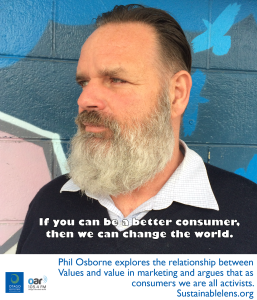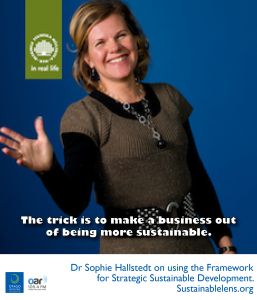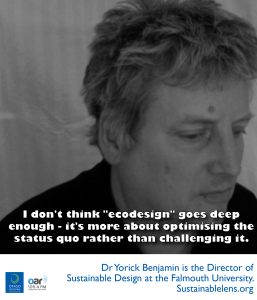On one hand I saw how wonderful people are when they gather to save patients with cancer – which was my job – and on the other hand that same species was destroying their own habitat, making doctors like me helpless if this was allowed to go on.
Dr Karl-Henrik Robèrt is the passion and the wisdom behind the Framework for Strategic Sustainable Development (see “also), and the The Natural Step Framework. In this conversation we look at the framework laying out the system conditions for sustainability was developed from his work in cancer treatment and research. We canvass at how the framework is being used now, and explore what’s next for a sustainable future.
Dr Robèrt is an Adjunct Professor at Blekinge Institute of Technology where he teaches on the Strategic Leadership towards Sustainability (MSLS) Programme and researches the Framework for Strategic Sustainable Development. You can listen to conversations with some of his colleagues here, including Merlina Missimer who recently defended her doctoral thesis on the social aspects of the framework.
Talking points
I was interested in humans destroying their habitat. We are completely dependent on natural cycles and biodiversity.
On one hand I saw how wonderful people are when they gather to save patients with cancer – which was my job – and on the other hand that same species was destroying their own habitat, making doctors like me helpless if this was allowed to go on. I just couldn’t make those two images merge into one.
What we needed to do, from the scientific community was to present the sustainability issue as something of inherent interest for strategists, company owners, executives in politics and business.
The human body is a complex system, indeed each cell is a cosmos of complex life relationships. When and one cell gets sick, a cancer, it might eventually threaten this huge complex system – just like unsustainability is threatening the large system we are all dependent on. We needed the same kind of overriding systems principles to cure unsustainability that we use in cancer treatment. We didn’t have boundary conditions to help us cure unsustainability – so I set out to find them.
Mother Earth, our civilisation is gradually dying from the deadly disease of unsustainability.
We have outlined the basic mechanisms of destruction. Rockstrom has begun to calculate for how long we can violate those principles until the point of no-return. It is a bit like we have deduced the principle of avoiding obesity – don’t eat more than you expend in energy – Rockstrom has worked out how fat you become be until you die. Both of those things are of interest if you want to avoid dying of obesity.
Why would you design a vision for your company that cannot be?
If we backcast from a sustainable world, it is obvious that we have got there in incremental steps, so we must stepwise make whole sectors converge towards complying with the basis principles of sustainability. But on the other hand, if by incremental change you mean change that happens without the end game in sight, that will not carry us to sustainability.
Incremental change without the end game in sight is the tyranny of small steps.
Circular economy…fails to recognise that some things can’t move in cycles and should be phased out.
(Activist) Yes, absolutely, very much. If we don’t change there will be no more civilisation – and I will be as harmed as anyone. I chose the way of an activist to respond to “what’s in it for me”, to get people to think about that in a deeper way, and then how to do it.
The selfish stuff can be managed by enlightened self-interest.
(Motivation) Why do I continue to do this? Why would anyone want to learn his living by saving the planet? It’s obvious, right. But it is also fascinating. I’ve always felt confusion a challenge to overcome, I like comprehension.
(Challenges) Scaling up, using modern tools to spread the awareness of the framework.
(Miracle) What we have developed is nothing less than an operating system for sustainability…and we have developed app after app to apply the framework…a miracle would be Bill Gates phoning up to say “why don’t we put this operating system into Windows?”. So that this language for managing the greatest challenge to civilisation is made part of the operating system of our computers. That would crack the problems of how do we scale up the dissemination.
(Advice) Look up (the Framework for Strategic Sustainability), try to live accordingly, support organisations (WWF, Greenpeace), look at how you vote – this is the most important issue of all you shouldn’t vote just by tradition, you should think about which parties in parliament take sustainability the most seriously .




